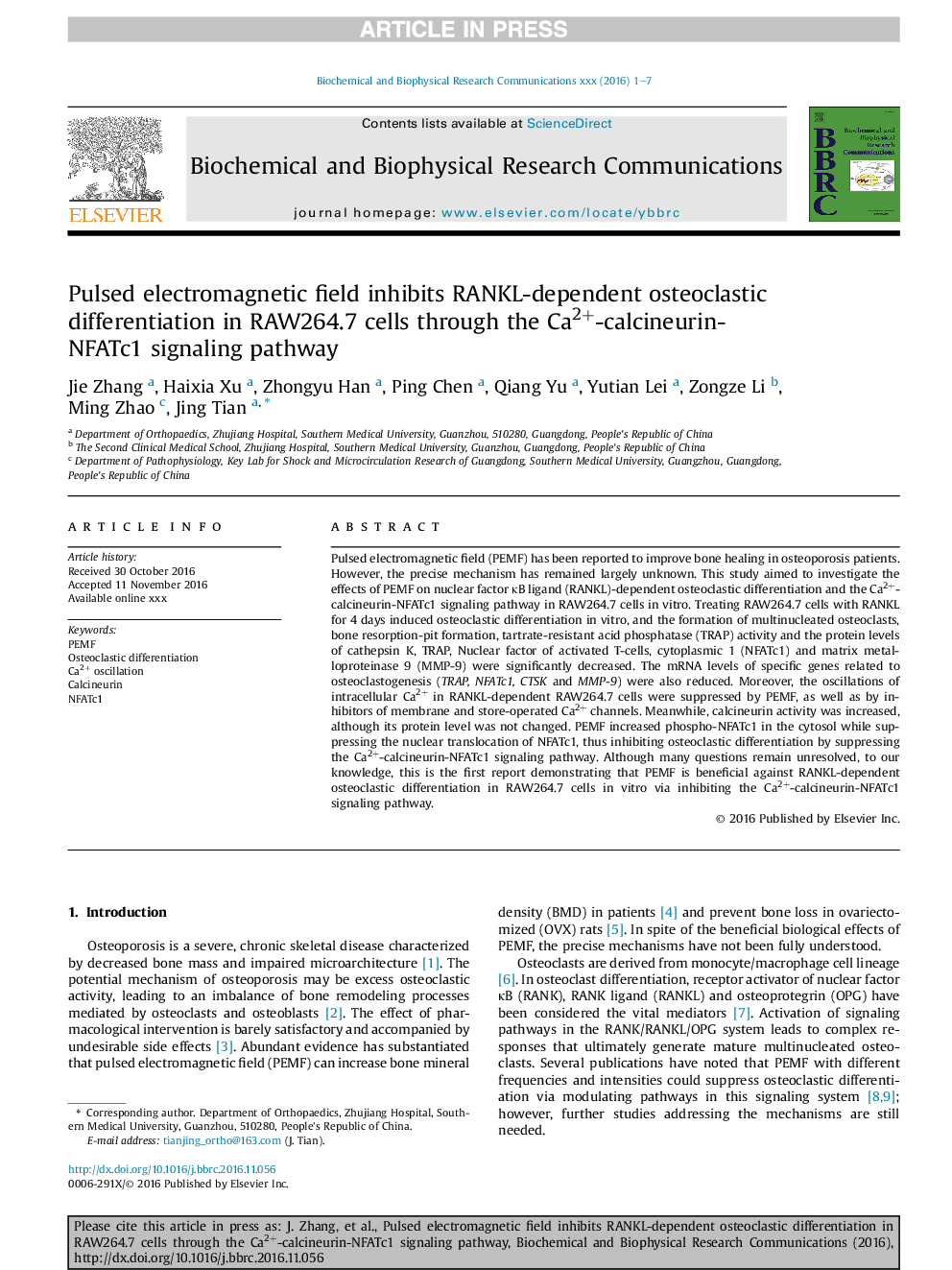| Article ID | Journal | Published Year | Pages | File Type |
|---|---|---|---|---|
| 5505816 | Biochemical and Biophysical Research Communications | 2017 | 7 Pages |
Abstract
Pulsed electromagnetic field (PEMF) has been reported to improve bone healing in osteoporosis patients. However, the precise mechanism has remained largely unknown. This study aimed to investigate the effects of PEMF on nuclear factor κB ligand (RANKL)-dependent osteoclastic differentiation and the Ca2+-calcineurin-NFATc1 signaling pathway in RAW264.7 cells in vitro. Treating RAW264.7 cells with RANKL for 4 days induced osteoclastic differentiation in vitro, and the formation of multinucleated osteoclasts, bone resorption-pit formation, tartrate-resistant acid phosphatase (TRAP) activity and the protein levels of cathepsin K, TRAP, Nuclear factor of activated T-cells, cytoplasmic 1 (NFATc1) and matrix metalloproteinase 9 (MMP-9) were significantly decreased. The mRNA levels of specific genes related to osteoclastogenesis (TRAP, NFATc1, CTSK and MMP-9) were also reduced. Moreover, the oscillations of intracellular Ca2+ in RANKL-dependent RAW264.7 cells were suppressed by PEMF, as well as by inhibitors of membrane and store-operated Ca2+ channels. Meanwhile, calcineurin activity was increased, although its protein level was not changed. PEMF increased phospho-NFATc1 in the cytosol while suppressing the nuclear translocation of NFATc1, thus inhibiting osteoclastic differentiation by suppressing the Ca2+-calcineurin-NFATc1 signaling pathway. Although many questions remain unresolved, to our knowledge, this is the first report demonstrating that PEMF is beneficial against RANKL-dependent osteoclastic differentiation in RAW264.7 cells in vitro via inhibiting the Ca2+-calcineurin-NFATc1 signaling pathway.
Related Topics
Life Sciences
Biochemistry, Genetics and Molecular Biology
Biochemistry
Authors
Jie Zhang, Haixia Xu, Zhongyu Han, Ping Chen, Qiang Yu, Yutian Lei, Zongze Li, Ming Zhao, Jing Tian,
